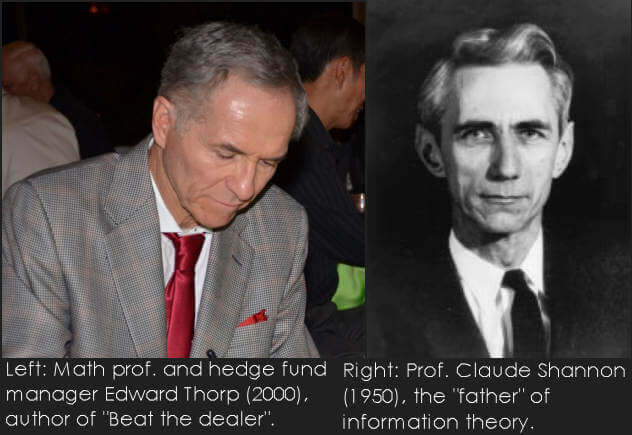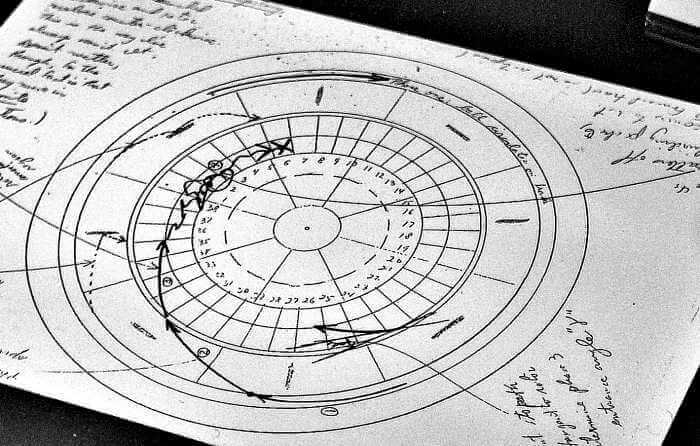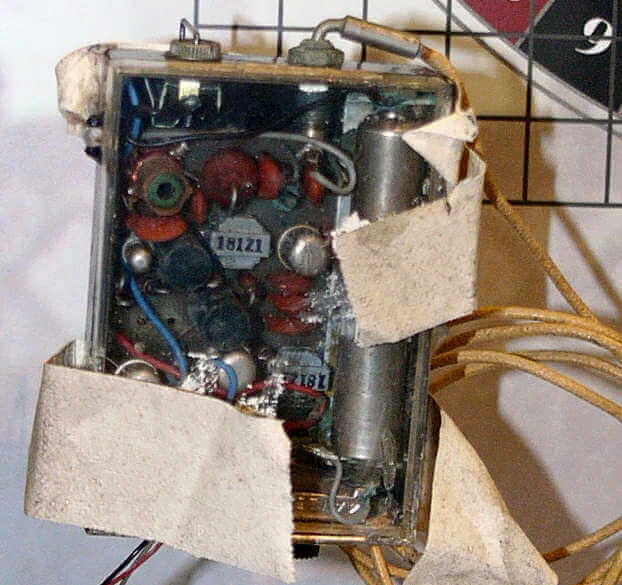 |
| The two geniuses who created the first wearable computer ever, in order to beat roulette and the casinos. |
Beating roulette remains a bridge too far for most of the gamblers and despite their best efforts, most fail miserably. The predicament of beating a seemingly invincible game fascinates not only roulette players, but also scientists and mathematicians. The efforts of Edward O. Thorp and Claude Shannon are still very much alive, half a century after they first started to construct a concealable computer capable of beating the roulette.
The plan came out of nowhere, when Edward was young and it lodged in his head, but the wheels were only set in motion when Thorp met another brilliant scientist. He was familiar with computers and the fact that he gained access to IBM 704, helped him push his plans into overdrive. Back then, this was a formidable machine, cutting-edge technology capable of solving problems that would’ve otherwise remain inaccessible for the regular roulette player.
 |
| Roulette wheel handwritten calculations and notes by Edward Thorp. |
Thorp and Shanon construct the first roulette computer
The scientists had two distinct obstacles to overcome, one being to create a functional, wearable computer and the other to hide it from casino representatives. The early tests proved that they were clearly on the right track, as the wearable device gave them a 44% edge in the game of roulette. It was smaller than a pack of cigarettes and by modern standards it was rather unassuming, containing no more than 12 transistors.
Their purpose was to time the number of revolutions is that the ball made on the roulette wheel, before finally deciding its resting place. Concealing the contraption was no walk in the park either, but Thorp and Shanon used wires hidden under their shirts, leading to switches all the way down in the toes of the shoes. An earpiece was also in place, to convey the message in the form of musical tones, each of them indicating one of the potential octants of the wheel, where the ball could end up resting.
It took several years to turn the intriguing concept into reality and at the beginning of the 60s, the pair was ready to put their invention to the test. They went to Vegas together with their wives and the two scientists divided responsibility, with one wearing the device while other timing the revolutions of the ball. In order to distract casino staff and induce the illusion that they were nothing more than system players, the one timing also diligently noted down the numbers.
 |
| The first ever wearable computer, created for predicting roulette numbers. |
The testing phase and the aftermath
The year is 1961. Thorp and Shanon knew from the very beginning that there was always the risk of the computer backfiring or malfunctioning, causing them to lose money. The system worked according to their expectations, with the two players placing bets and converting a handful of dollars into an impressive pile. While the two scientists were focusing exclusively on the game and their task, the wives were spotting for casino representatives, to determine whether they found Thorp and Shanon suspicious.
Technically, the roulette computer works pretty well, but when other casino players were startled by the speaker peering out of their ears, they had to leave the premises. Furthermore, the earpieces were not too sophisticated and the wires broke often, with the entire contraption being rather delicate and prone to failures. The wives were clearly not impressed by the results and thought that it would be wiser to take a lengthy break until they would be able to come up with a quick fix.
The prospect of being caught was terrifying for them and they convinced their husbands to return on another occasion. After this event, Throp was presented with an irresistible offer and he decided to focus on his job rather than developing a better roulette computer. He was even more successful at building a system to predict the “Wheel of fortune” results, but the device would’ve been too difficult to conceal.
While the inventors of these devices decided not to pursue with their plans, there were other groups who built on this technology and came up with their own projects. The “Romeo Project” is one of the most successful attempts and in the wake of their owners winning a lot of money in Las Vegas casinos, the technology was banned. The fact that Nevada devices law prohibite the use of any roulette or blackjack devices that could predict the outcome, says a great deal about Thorp and Shanon’s contribution.
[By recording spins with a video recorder we tried to gather data on roulette orbits to verify that they repeat to a high enough degree to allow predictability. The wheel used here is half scale. I (or my wife) spin the ball and once it is in motion I lift off the top so the ball is more clearly visible circling on the track. A stopwatch that is marked in 0.01 sec. divisions runs at the same time. The purpose of this is to time each frame as I was reluctant to depend solely on the camera mechanism to deliver frames at equally spaced intervals as a substitute for the stopwatch.
From the time in each frame and the ball location I planned to plot the orbit arising from one launch of the ball. Comparing the plots of the several orbits would show how consistent ball motion was from one orbit to the next. Each spin of the ball is “labeled” by a playing card in the lower right corner of the film. Although the stopwatch is difficult to read in the film, I planned to read the time values and the ball positions by placing the film under a microscope. The lady in the film is my wife Vivian.
In the middle of the film there is a short segment where, as a matter of curiosity, I film the motion of a 33 1/3 rpm phonograph record versus the timing on the stopwatch. The film was shot in two or more segments. The rotor was not moving in this film.
If the ball motion was consistent enough, then the next step I planned was to repeat the experiments with a moving rotor and verify again that the outcome was sufficiently predictable. Before doing this, I met Shannon. We collaborated and moved on to a full sized wheel.
When you view the film you can freeze-frame or advance frame by frame if desired.
-Edward Thorp]


